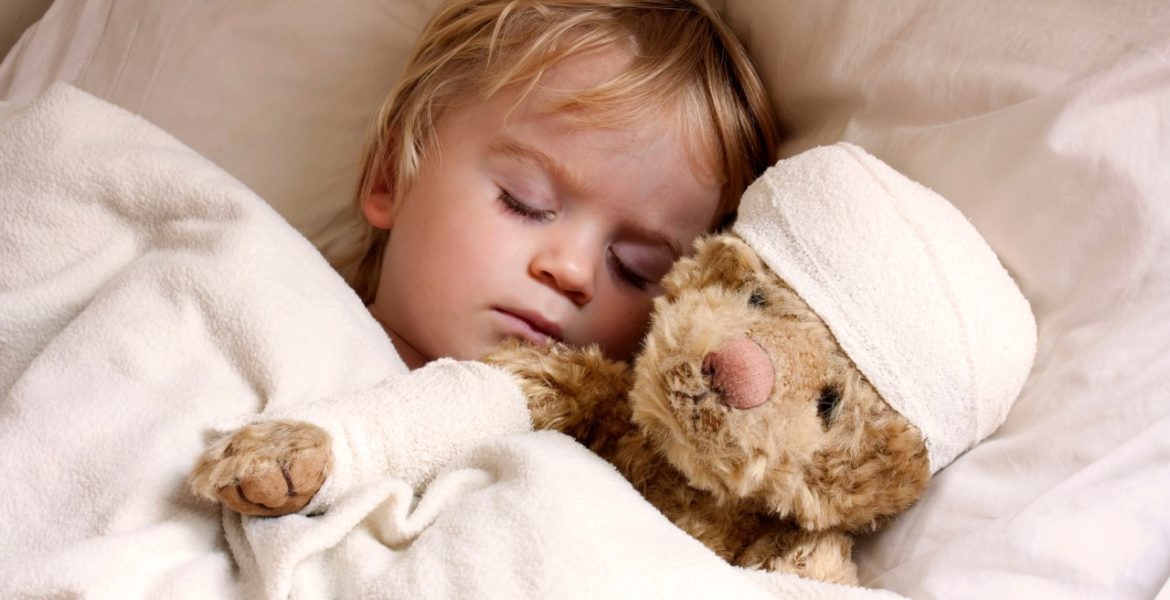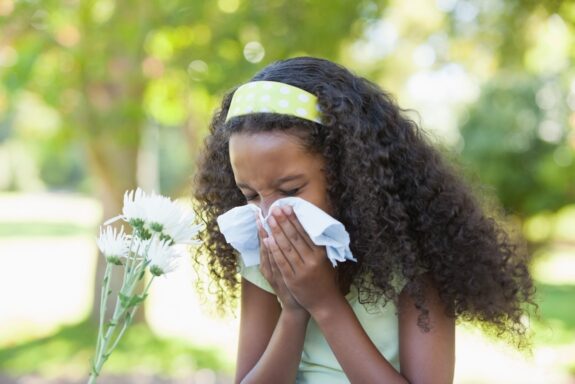
Children often bump or bang their heads and it can be difficult for parents to know whether it is serious or not. Any time a child has a blow to the head it is considered a head injury.
Most head injuries are not serious, especially in toddlers when they are developing motor skills. They can be especially prone to trips, falls and a host of other little accidents, that could lead to a bruise or bump on the head or an open wound. It is important to note that a fall from the child’s own height usually isn’t enough to cause a serious injury, but sometimes a blow to the head or falls from furniture can result in a more serious injury such as a skull fracture or concussion.
You may wonder if you should take your child to the hospital or take a conservative watch-and-wait approach. For anything more than a light bump on the head, the American Academy of Pediatrics (AAP) recommends that you call your child’s doctor for guidance or have them evaluated.
In a minor head injury, your child will be alert and interact appropriately following the injury. They usually cry immediately and will not lose consciousness. Sometimes a child will get so upset they throw up immediately after the injury. Once they calm down, they should be able to eat and drink normally without vomiting. They may also have bruising, mild swelling and/or an abrasion or cut to the head.
If your child is alert and behaving like her normal self and her doctor says it’s fine for your child to be watched at home, here are some things you can do:
- Watch your toddler carefully for a few days because some head injuries can cause delayed symptoms. If you notice any confusion, unusual gait or increased signs of pain or fussiness or your child’s condition seems to get worse, or you’re just worried, contact the pediatrician or go to the ER.
- Use an ice pack or bag of frozen veggies wrapped in a washcloth to help bring down the swelling and soothe a toddler’s head injury.
- If your child is in pain, give her over-the-counter pain medicine such as Tylenol.
- If your child has a very minor cut on the face or scalp, gently clean it with mild soap and warm water and put a bandage on it. A long or deep cut may require stitches. Most minor contusions will fade away and disappear within a couple of weeks.
- Unless your doctor tells you otherwise, let your child sleep. It’s common for toddlers to doze off after a head injury, so don’t be alarmed if your sweetie wants to snooze — she’s probably just exhausted. For the first 48 hours, monitor your child’s sleep closely. If you feel like something is off, try to wake your child up. She should do some fussing and try to get back to sleep. If your child seems unresponsive or you can’t wake her up, call 911 or take her to the emergency room right away.
There are certain types of injuries that are more concerning and should be evaluated immediately, such as:
- Falling from a high location: such as a grocery cart, deck, stairways, or high chair (3 feet or higher for children under 2 years of age and 5 feet or higher for children 2 years and older)
- Being hit by a fast-moving object: like a ball, large rock, or baseball bat
- Bicycle, rollerblades, or skateboard accidents without wearing a helmet
Based on the severity of the accident, your child may need to go to the ER for an X-ray of their skull or a CT scan. This would be to look for signs of swelling, bleeding, or fracture. Treatment of head injuries depends on the location of the injury, the severity of the injury, your child’s symptoms, and her age.
If your toddler has had a concussion, she will have to take it easy for the first few days. Make sure she gets plenty of rest, and limit her physical activities and other activities that require a lot of thinking and concentration. Also, avoid activities that could put your child at risk of injuring her head again. As time goes on and your child starts to feel better and has fewer symptoms, you can gradually increase her activity as she can tolerate it. If your toddler starts to have symptoms again after resuming more vigorous activity, have her rest and try again the next day. For prolonged symptoms, follow up with your Pediatrician or Healthcare provider.
The good news is that most kids will recover without complications. If the injury is minor, no treatment may be necessary. Just a little extra TLC should make things better. All toddlers experience an occasional bump on the head.
However, there are some things you can do to prevent toddler head injuries:
- Childproof. Put safety gates at the tops and bottoms of stairs, secure heavy, climbable furniture and TVs to the wall, and install window guards.
- Supervision. Don’t leave your toddler alone on a high surface such as a changing table, bed, sofa, or high chair. Use any restraining straps your baby gear comes with, but don’t have a false sense of security. Little ones wriggle and roll a lot.
- Buckle up. Always use the harness and safety straps when your toddler is in his/her stroller, in the high chair, or on the changing table.
- Provide a safe sleeping space. Keep the side rails on your child’s crib or toddler bed up. Lower the mattress to the lowest setting and avoid using crib bumpers even though your child isn’t a baby anymore because they can be used to climb out of the crib. And never put the crib or bed next to a window or within reach of a heavy piece of furniture.
- Protect their heads. Make sure your child always wears a helmet while riding a tricycle, scooter, or bike (yes, even with the training wheels), or when in a child seat on the back of an adult’s bike.
- Car seats are a must. Always use a child’s car seat and make sure your toddler is properly strapped in while she’s traveling in a vehicle.
Remember, most toddler head injuries tend to be minor and don’t cause lasting damage. After a little (or a lot) of crying and some TLC, your toddler may forget all about it. If you have questions or concerns regarding your child’s accident, contact your primary healthcare provider or bring your child into an Urgent Care for further evaluation. If it’s a more serious injury, remain calm, call 911 or take your child to the Emergency Room.



